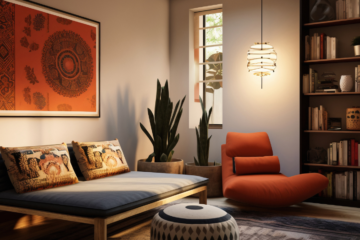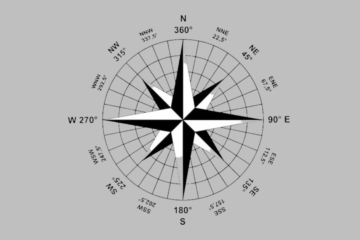In the world of interior design and architecture, there’s a fascinating ancient tradition that continues to influence the way spaces are planned and designed – Vaastu Shastra. Originating from the Indian subcontinent, Vaastu Shastra is a set of architectural and design principles that aim to harmonize the environment with the individual, fostering a sense of balance and well-being. In this blog, we’ll delve into the fundamental principles and practices of Vaastu Shastra and explore how they can be applied to interior design.
Understanding Vaastu Shastra
Vaastu Shastra, often referred to simply as Vaastu, is derived from the Sanskrit words “Vastu,” meaning dwelling or building, and “Shastra,” meaning science or knowledge. It is essentially a science of architecture and design that has been practiced for thousands of years in India. The core philosophy of Vaastu revolves around the idea that the layout, orientation, and arrangement of a space can significantly impact the lives of the inhabitants.
Key Principles of Vaastu Shastra
- Orientation: One of the fundamental principles of Vaastu is the orientation of the building. The cardinal directions – North, South, East, and West – play a crucial role in determining the layout and positioning of various elements within the space. For instance, the entrance of a home or building is ideally placed in the North or East direction to allow for the influx of positive energy.
- Five Elements: Vaastu Shastra is deeply rooted in the concept of the Pancha Mahabhutas, or the five elements – Earth, Water, Fire, Air, and Space. A well-balanced space integrates these elements harmoniously, creating a conducive environment for living or working. Each element corresponds to specific directions and materials, and their proper placement is essential for maintaining equilibrium.
- Energy Flow: According to Vaastu principles, the flow of energy, or “prana,” should be unobstructed within a space. Clutter, irregular shapes, and blocked pathways can disrupt the natural flow of energy, leading to imbalance and disharmony. Designing spaces with open layouts, ample ventilation, and minimal obstructions promotes positive energy flow.
- Functionality and Aesthetics: While Vaastu emphasizes the importance of adhering to ancient principles, it also recognizes the significance of functionality and aesthetics in design. A well-designed space should not only align with Vaastu guidelines but also cater to the practical needs and preferences of its occupants.
Applying Vaastu Principles to Interiors
Integrating Vaastu principles into interior design involves careful planning and thoughtful execution. Here are some practical tips for incorporating Vaastu Shastra into interiors:
- Room Layout: Arrange furniture and fixtures in a manner that promotes free movement and accessibility. Avoid placing heavy furniture in the center of the room or blocking doorways and windows.
- Color and Texture: Choose colors and textures that evoke a sense of tranquility and balance. Earthy tones like beige, brown, and green are often favored in Vaastu-compliant interiors, while avoiding excessively bright or jarring hues.
- Natural Light: Maximize the use of natural light by incorporating large windows and skylights wherever possible. Natural light not only enhances the aesthetic appeal of a space but also contributes to the overall well-being of its occupants.
- Symbolism and Décor: Incorporate elements of nature, such as plants, water features, and natural materials, to bring a sense of harmony and vitality into the space. Additionally, symbolic representations like Vastu yantras and traditional artworks can enhance the positive energy of the environment.
Conclusion
Vaastu Shastra offers a holistic approach to interior design, emphasizing the interconnectedness of the individual with their surroundings. By integrating the principles of orientation, energy flow, and elemental balance, Vaastu-compliant interiors strive to create spaces that promote harmony, well-being, and prosperity. While adhering to ancient wisdom, modern interpretations of Vaastu allow for flexibility and creativity in design, ensuring that each space reflects the unique needs and aspirations of its occupants. Whether you’re designing a home, office, or commercial space, embracing the principles of Vaastu Shastra can transform ordinary environments into havens of positivity and inspiration.




